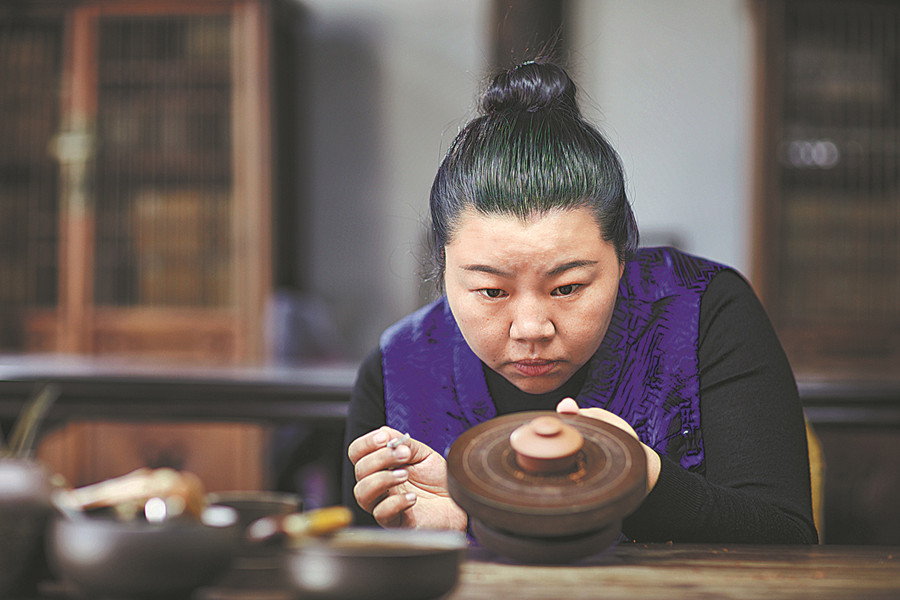Ceramist to promote heritage projects

Tian Jing works at her purple pottery learning center in Jianshui, Yunnan province. [Photo/China Daily]
Tian Jing can't wait to share her ideas about protecting intangible culture heritage and inheritance during the upcoming two sessions, the annual gatherings of China's national legislative and the Chinese People's Political Consultative Conference (CPPCC) National Committee.
The 45-year-old was born in Jianshui county, Southwest China's Yunnan province, and is a member of the CPPCC National Committee.
Tian said she would suggest increasing joint efforts between governments, schools and companies linked to culture to strengthen intangible culture heritage training at vocational schools in areas inhabited by ethnic minority groups.
She called upon the parties concerned to take into account associated needs such as schools setting up relevant academic majors and offering employment support.
Theory and practice should also be organically integrated during teaching, she added. "Since the 18th CPC National Congress, China's intangible cultural heritage protection and inheritance work has achieved tangible results," Tian said.
"A large number of intangible cultural heritage projects have been protected, and conditions have been significantly improved for intangible cultural heritage inheritors to carry on their traditions."
At last year's two sessions, Tian proposed increasing the number of intangible cultural heritage teachers at medium-level vocational schools in areas inhabited by ethnic minority groups and building national intangible cultural heritage digital museums.
"Both proposals have advanced," she said.
Since a guideline was released in August by the general offices of the Communist Party of China Central Committee and the State Council, China's Cabinet, efforts have been stepped up to protect, promote and popularize intangible cultural heritage, including through government funds for preservation, reduced interest on loans and tax incentives.
"It was a substantial protective policy, and many vocational schools now offer classes in intangible cultural heritage skills," Tian said.
She was named a provincial inheritor of Jianshui's national intangible culture heritage of "purple pottery firing" in 2014. Jianshui's purple pottery, which flourished during the Qing Dynasty (1644-1911), is made from the county's "five-color" clay, which consists of red, yellow, purple, white and green clays colored by various minerals. Finished pieces are hand-painted and coated in an unglazed polish.
Copyright © The National Committee of the Chinese People's Political Consultative Conference.
All rights reserved. Presented by China Daily.
京ICP备08100501号-1

